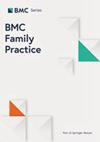Burden of antimicrobial prescribing in primary care attributable to sore throat: a retrospective cohort study of patient record data
IF 3.2
3区 医学
Q1 MEDICINE, GENERAL & INTERNAL
引用次数: 0
Abstract
Reducing antibiotic use in Australia, and the subsequent impact on antimicrobial resistance, requires multiple, sustained approaches with appropriate resources and support. Additional strategies to reduce antibiotic prescribing include effective vaccines, against pathogens such as Streptococcus pyogenes, the most common bacterial cause of sore throat. As part of efforts towards assessing the benefits of introducing new strategies to reduce antimicrobial prescribing, we aimed to determine the burden of antimicrobial prescribing for sore throat in general practice. General practice activity data from 2013 – 2017 derived from the first 8 practices participating in the ‘Primary Care Audit, Teaching and Research Open Network’ (Patron) program were analysed according to reason for visit (upper respiratory tract infection, URTI, or sore throat) and antibiotic prescription. The main outcome measures were percentage of sore throat or URTI presentations with antibiotic prescription by age. A total of 722,339 visits to general practice were made by 65,449 patients; 5.7% of visits were for URTI with 0.8% meeting the more specific criteria for sore throat. 66.1% of sore throat visits and 36.2% of URTI visits resulted in antibiotic prescription. Penicillin, the recommended antibiotic for sore throat when indicated, was the antibiotic of choice in only 52.9% of sore throat cases prescribed antibiotics. Broader spectrum antibiotics were prescribed more frequently in older age groups. Frequency of antibiotic prescribing for sore throat is high and broad, despite Australian Therapeutic guideline recommendations. Multiple, sustained interventions to reduce prescribing, including availability of effective S. pyogenes vaccines that could reduce the incidence of streptococcal pharyngitis, could obviate the need to prescribe antibiotics and support ongoing efforts to promote antimicrobial stewardship.基层医疗机构因咽喉炎而开具抗菌药处方的负担:对患者记录数据的回顾性队列研究
在澳大利亚,减少抗生素的使用以及随后对抗菌药耐药性的影响,需要采取多种持续的方法,并提供适当的资源和支持。减少抗生素处方的其他策略还包括针对化脓性链球菌等病原体的有效疫苗,化脓性链球菌是导致咽喉炎的最常见细菌。作为评估引入新策略以减少抗菌药物处方的益处工作的一部分,我们旨在确定全科医生因咽喉痛而开具抗菌药物处方的负担。我们根据就诊原因(上呼吸道感染、URTI 或咽喉炎)和抗生素处方分析了首批参与 "初级医疗审计、教学和研究开放网络"(Patron)计划的 8 家诊所在 2013 年至 2017 年期间的全科活动数据。主要结果指标是按年龄划分的咽喉痛或 URTI 就诊者中开具抗生素处方的百分比。65,449 名患者共到全科诊所就诊 722,339 次;5.7% 的就诊者为 URTI,0.8% 的就诊者符合更具体的咽喉痛标准。66.1%的咽喉炎就诊者和 36.2% 的尿道炎就诊者开出了抗生素处方。青霉素是治疗咽喉炎的推荐抗生素,但只有 52.9% 的咽喉炎患者选择了青霉素。在年龄较大的人群中,广谱抗生素的处方频率更高。尽管澳大利亚治疗指南提出了建议,但针对咽喉炎的抗生素处方频率很高,而且范围很广。持续采取多种干预措施来减少处方,包括提供有效的化脓性链球菌疫苗,从而降低链球菌性咽炎的发病率,这样就可以避免开抗生素处方的必要性,并支持不断促进抗菌药物管理的努力。
本文章由计算机程序翻译,如有差异,请以英文原文为准。
求助全文
约1分钟内获得全文
求助全文
来源期刊

BMC Family Practice
医学-医学:内科
CiteScore
3.20
自引率
0.00%
发文量
0
审稿时长
4-8 weeks
期刊介绍:
BMC Family Practice is an open access, peer-reviewed journal that considers articles on all aspects of primary health care research. The journal has a special focus on clinical decision making and management, continuing professional education, service utilization, needs and demand, and the organization and delivery of primary care and care in the community.
 求助内容:
求助内容: 应助结果提醒方式:
应助结果提醒方式:


